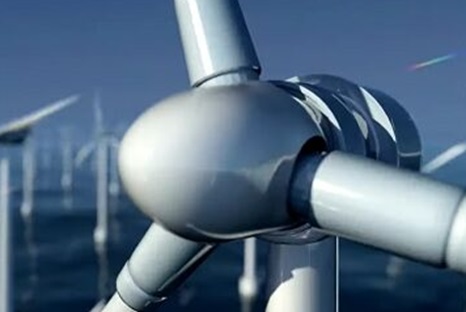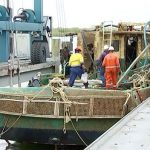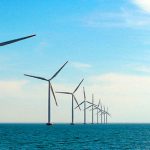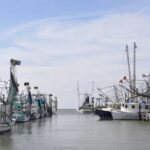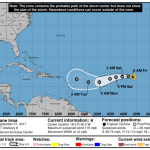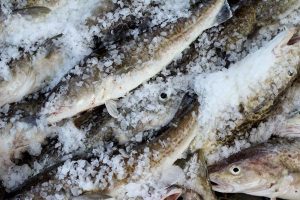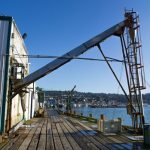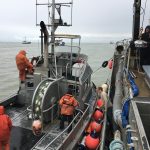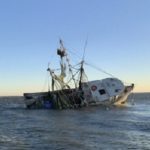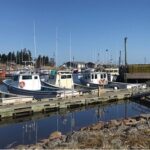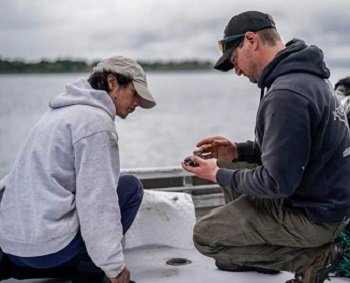 Lane Bolich first came to work in Alaska for the freedom and excitement that comes with being a fisher. A self-described adrenaline junkie, Bolich moved from his hometown in rural Washington state because he loves being on the ocean even in cold winter weather and it gave him the chance to make more money than back home. After working as a deckhand for two years on a family friend’s boat, Harmony, he took the wheel as captain this year at just 20 years old. Bolich is a rarity in an aging industry with high barriers to entry, equipment and access rights are costly, and increasing unpredictability as human-caused climate change alters marine habitats. As some fish populations dwindle and fewer people pursue the trade, fishers and conservation groups are actively working to bring in and retain the next generation of fishers through grants and training even as the industry continues to shrink in Alaska. 19 photos, >>click to read<< 09:38
Lane Bolich first came to work in Alaska for the freedom and excitement that comes with being a fisher. A self-described adrenaline junkie, Bolich moved from his hometown in rural Washington state because he loves being on the ocean even in cold winter weather and it gave him the chance to make more money than back home. After working as a deckhand for two years on a family friend’s boat, Harmony, he took the wheel as captain this year at just 20 years old. Bolich is a rarity in an aging industry with high barriers to entry, equipment and access rights are costly, and increasing unpredictability as human-caused climate change alters marine habitats. As some fish populations dwindle and fewer people pursue the trade, fishers and conservation groups are actively working to bring in and retain the next generation of fishers through grants and training even as the industry continues to shrink in Alaska. 19 photos, >>click to read<< 09:38
Tag Archives: high costs
As climate change and high costs plague Alaska’s fisheries, fewer young people take up the trade
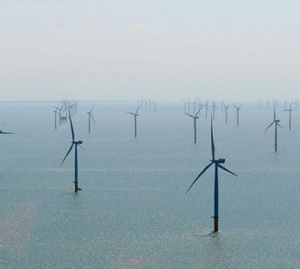
Offshore Windmills Will Generate High Costs and Unsafe Conditions
A new wave of commenters now seems to have adopted the Kennedy family objection to an offshore wind farm that was proposed about 30 years ago for the area just south of Hyannis, off Cape Cod. “Well,” said one Kennedy family member memorably, “but we will have to look at those monstrosities.” Offshore wind is one of the most expensive sources of commercial electricity generation when all costs including maintenance and repairs are included in the rate calculation. Onshore windmills, on the other hand, are one of the least expensive ways to generate electricity, just a little cheaper than using natural gas. However, that’s a problem since Biden inflation and energy production in this country are locked together and have produced nothing but higher costs on everything. >click to read< 08:35
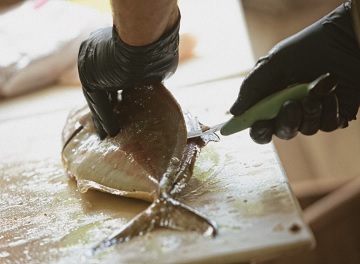
One fish, two fish: The local commercial fishing industry faces daunting challenges despite high demand
It’s just after noon on an unseasonably warm Friday in early spring. Naples has had a string of cold days and now this hot one, but no one standing in line in front of Mike’s Bait House in East Naples seems to mind. The line extends from the street, where cars are parked nose-to-bumper. It snakes through the parking lot and winds beside a black extended-cab Chevy. In the back of the truck, two young men from Dilly’s Fish Co, owned by Tim “Dilly” Dillingham, lean over Grizzly coolers. “What’s the difference between a lane snapper and a red snapper?” a man in line calls out. “A red snapper’s going to be a little more firm,” one of the young men in the back of the truck answers. That’s Dominick Biagetti, Dillingham’s right-hand man. Biagetti serves as boat captain and crew, and he helps with offloading and delivery. He has a seascape tattooed on his leg, an underwater reef scene with a turtle and a moray eel. >click to read< 12:10
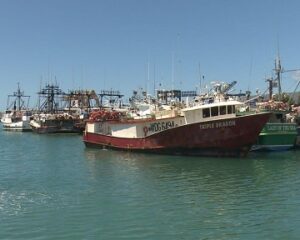
Hawaii fishermen on the hook for high costs as seafood prices continue to rise
You may be seeing trouble when you pull out your wallet to pay for fish and seafood, but it’s the fishing industry that’s threatened right now. As fisherman Paul Dodder prepares to once again head out to sea. Expenses are on his mind. “Fuel prices are always the number one expense,” said Dodder. Diesel fuel we’re told is up 50%. But there are other costs as well. “Baits and supplies for your crew, all of that has increased 40%-50%,” said Hawaii Longline Association Executive Director Eric Kingma. Those costs on top of increasing demand are driving prices up. Video, >click to read< 19:34
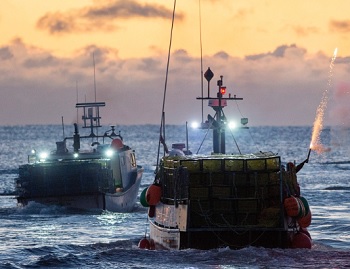
On eve of lobster season, fishermen worry about low prices and high costs
Glace Bay harbour was a busy spot on Thursday, with lobster fishermen loading traps in preparation for setting day on Friday. It’s a time that is usually much anticipated among fishermen, but not this year. “I would say we’re going to lose 40 to 50 percent from last year to this year,” said Herb Nash. Nash has been a fisherman for more than 30 years and says he hasn’t seen prices this low since the seventies. “I don’t think our fishery is going to last two months anyway,” he said. “I think if we get two or three weeks out of it. They’re not going to be able to sell the lobster or prices are going to be that low, we’re not going to be able to afford it. We’re paying $1.25 pound for bait and we’re getting $5 dollars for lobster.” >click to read< 21:59






